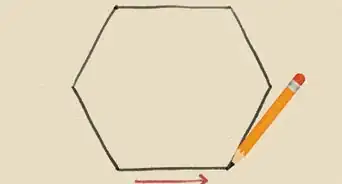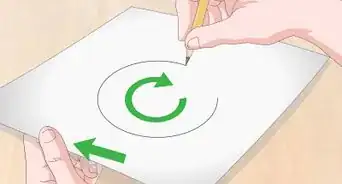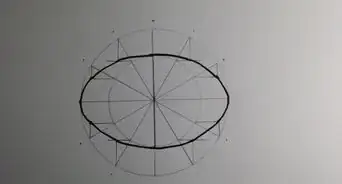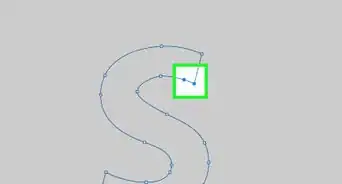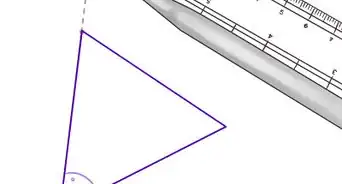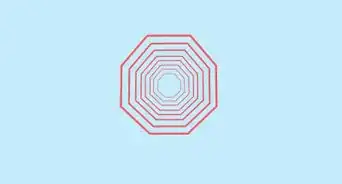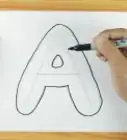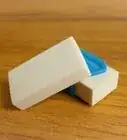This article was co-authored by wikiHow staff writer, Kyle Hall. Kyle Hall works on the content team at wikiHow. He helps manage our team of editors and creates content for a variety of wikiHow projects. Kyle continually looks for new ways to improve the content at wikiHow and make it more helpful and enjoyable for readers. He graduated from Eckerd College in 2015, where he majored in Political Science.
The wikiHow Video Team also followed the article's instructions and verified that they work.
This article has been viewed 50,563 times.
Learn more...
Drawing a rectangle is simple once you know what to do! All you need is a ruler, a sheet of paper, and something to draw with.
Steps
-
1Draw a straight, horizontal line using a ruler. Using a ruler will help you make sure that your line is straight, so that your rectangle turns out neat and even. Make the line however long you want your rectangle to be.[1]
- This line will be the top of your rectangle, so draw it wherever you want the top to go.
-
2Make a shorter vertical line coming down from one end of the first line. Use the ruler to draw this line too, so that it’s straight. The angle between this line and the first line should be 90 degrees.[2]
- Make sure this line is shorter than the first line you drew. If it’s the same length, you’ll end up drawing a square instead of a rectangle.
- You can use a protractor to measure the angle between the vertical and horizontal lines.
Advertisement -
3Draw a horizontal line coming off the bottom end of the vertical line. Make sure this line is straight like the first two lines and that it’s the same length as the first horizontal line you drew. This will be the bottom of the rectangle.
- This horizontal line should be parallel with the horizontal line at the top of the rectangle.
-
4Draw a vertical line between the ends of the two horizontal lines. Use the ruler to make the line straight. This vertical line should be the same length as the first vertical line you drew on the other side of the rectangle.[3]
- After you draw this line, your rectangle is finished!
-
5Color in your rectangle to make it pop. Now that your rectangle is finished, you can shade it in with pencil or color it with marker so that it stands out. You can also go over the perimeter of the rectangle with pen or black marker, so the lines are more visible.
Community Q&A
-
QuestionHow do I construct a rectangle with given lengths using a compass?
 Elena HimmerichCommunity AnswerUse your straightedge to draw a horizontal line. Then measure the bottom line of the rectangle with your compass. Put the point of the compass on one end of the line you drew and use it to mark the end of the segment. Put the point of your compass on that mark and make marks on the line on either side, keeping the compass at a small width. Then draw arcs with your compass point on those marks. They will intersect. Draw a straight line through the intersection and use your compass to make sure it is the right length. Do the same thing on the other side of the segment. Then connect the tops of the lines.
Elena HimmerichCommunity AnswerUse your straightedge to draw a horizontal line. Then measure the bottom line of the rectangle with your compass. Put the point of the compass on one end of the line you drew and use it to mark the end of the segment. Put the point of your compass on that mark and make marks on the line on either side, keeping the compass at a small width. Then draw arcs with your compass point on those marks. They will intersect. Draw a straight line through the intersection and use your compass to make sure it is the right length. Do the same thing on the other side of the segment. Then connect the tops of the lines. -
QuestionHow to draw a 3-D rectangle on graph paper?
 Community AnswerAdd a rectangle that's in a slightly different position from the first rectangle. Connect the corners. Erase the things that should be hidden behind the rectangle to make it appear solid.
Community AnswerAdd a rectangle that's in a slightly different position from the first rectangle. Connect the corners. Erase the things that should be hidden behind the rectangle to make it appear solid.
References
About This Article
To draw a rectangle, start by drawing a straight, horizontal line using a ruler. Then, draw a shorter vertical line that extends down from one end of the first line. Next, draw a horizontal line that extends off the bottom end of the vertical line. Make sure it’s the same length as the first horizontal line you drew. Finally, draw a vertical line between the ends of the 2 horizontal lines to finish the rectangle. If you want to learn how to check the angles on your rectangle, keep reading the article!
